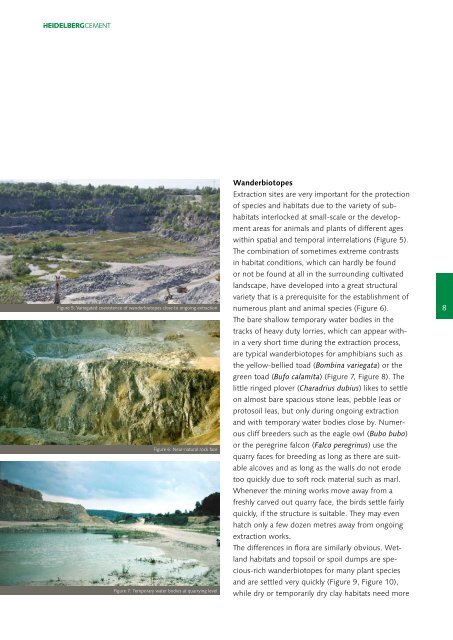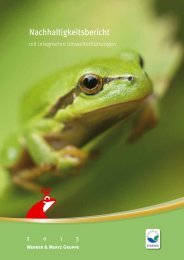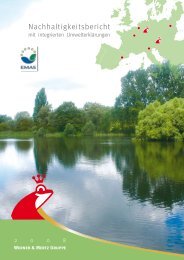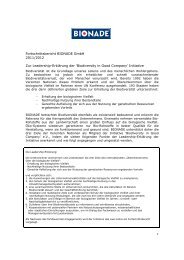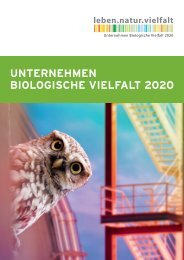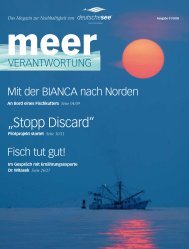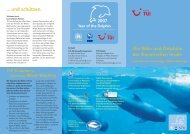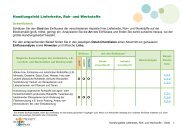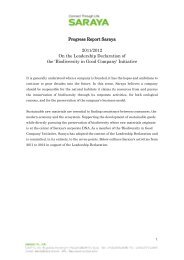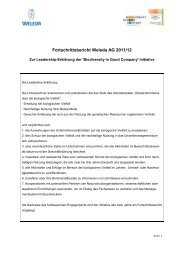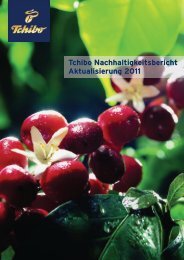Group guideline for the promotion of biodiversity - Business and ...
Group guideline for the promotion of biodiversity - Business and ...
Group guideline for the promotion of biodiversity - Business and ...
- No tags were found...
Create successful ePaper yourself
Turn your PDF publications into a flip-book with our unique Google optimized e-Paper software.
Figure 5: Variegated coexistence <strong>of</strong> w<strong>and</strong>erbiotopes close to ongoing extractionFigure 6: Near-natural rock faceFigure 7: Temporary water bodies at quarrying levelW<strong>and</strong>erbiotopesExtraction sites are very important <strong>for</strong> <strong>the</strong> protection<strong>of</strong> species <strong>and</strong> habitats due to <strong>the</strong> variety <strong>of</strong> subhabitatsinterlocked at small-scale or <strong>the</strong> developmentareas <strong>for</strong> animals <strong>and</strong> plants <strong>of</strong> different ageswithin spatial <strong>and</strong> temporal interrelations (Figure 5).The combination <strong>of</strong> sometimes extreme contrastsin habitat conditions, which can hardly be foundor not be found at all in <strong>the</strong> surrounding cultivatedl<strong>and</strong>scape, have developed into a great structuralvariety that is a prerequisite <strong>for</strong> <strong>the</strong> establishment <strong>of</strong>numerous plant <strong>and</strong> animal species (Figure 6).The bare shallow temporary water bodies in <strong>the</strong>tracks <strong>of</strong> heavy duty lorries, which can appear withina very short time during <strong>the</strong> extraction process,are typical w<strong>and</strong>erbiotopes <strong>for</strong> amphibians such as<strong>the</strong> yellow-bellied toad (Bombina variegata) or <strong>the</strong>green toad (Bufo calamita) (Figure 7, Figure 8). Thelittle ringed plover (Charadrius dubius) likes to settleon almost bare spacious stone leas, pebble leas orprotosoil leas, but only during ongoing extraction<strong>and</strong> with temporary water bodies close by. Numerouscliff breeders such as <strong>the</strong> eagle owl (Bubo bubo)or <strong>the</strong> peregrine falcon (Falco peregrinus) use <strong>the</strong>quarry faces <strong>for</strong> breeding as long as <strong>the</strong>re are suitablealcoves <strong>and</strong> as long as <strong>the</strong> walls do not erodetoo quickly due to s<strong>of</strong>t rock material such as marl.Whenever <strong>the</strong> mining works move away from afreshly carved out quarry face, <strong>the</strong> birds settle fairlyquickly, if <strong>the</strong> structure is suitable. They may evenhatch only a few dozen metres away from ongoingextraction works.The differences in flora are similarly obvious. Wetl<strong>and</strong>habitats <strong>and</strong> topsoil or spoil dumps are specious-richw<strong>and</strong>erbiotopes <strong>for</strong> many plant species<strong>and</strong> are settled very quickly (Figure 9, Figure 10),while dry or temporarily dry clay habitats need more8


